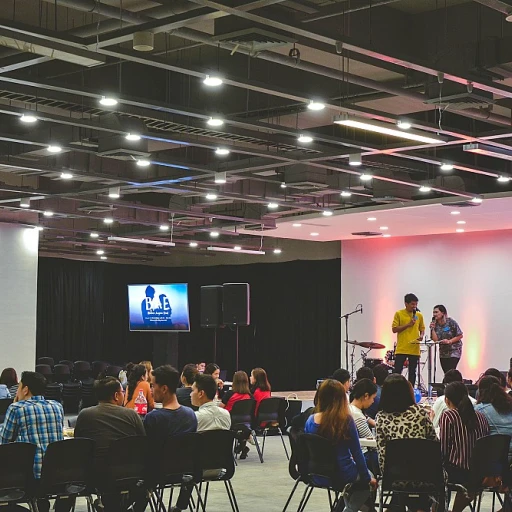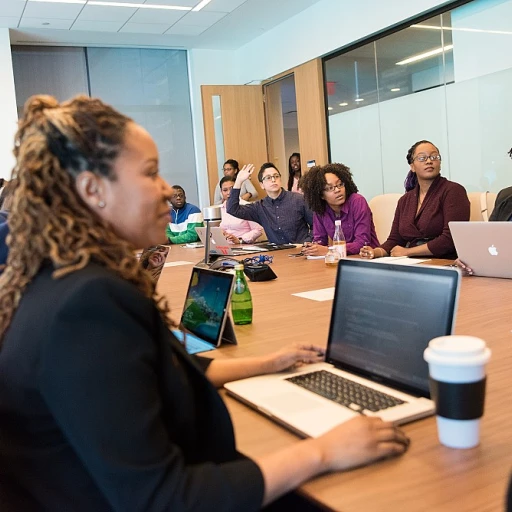The Essence of the 'California Right to Disconnect'
The Core of the "Right to Disconnect" Concept
In a world where the lines between working and nonworking hours are increasingly blurred, the concept of the "California Right to Disconnect" law is gaining traction. This legislative proposal aims to provide employees with the right to disconnect from work-related communications outside of their designated work hours without fear of repercussions. This is particularly relevant in California, a state known for its proactive stance on employment law.
The proposed bill, which echoes similar laws in European countries, seeks to empower employees by giving them the right to ignore communications from their employer during their nonworking hours. This provides a critical safeguard for the work-life balance of employees, allowing them to disengage from workplace demands during their personal time. By granting this right, the legislation recognizes the importance of rest and personal time in maintaining the well-being and productivity of workers.
San Francisco, being a hub of innovation, is closely watching this development as it can significantly impact how employers manage their employee relations. The public discourse around this legislation touches upon how best to ensure compliance while respecting both employee rights and employer needs.
For HR professionals, understanding the "California Right to Disconnect" is crucial. It not only influences how employee hours are managed but also impacts broader employment law considerations across the workplace. For those keen on knowing how AI can play a role in this evolving landscape, exploring how AI enhances internal equity in human resources could provide valuable insights into harmonizing employee rights and employer responsibilities.
AI's Role in Monitoring Work-Life Balance
AI's Contribution to Sustaining the Right to Disconnect
In today's fast-paced workplace, achieving a proper work-life balance can be an elusive goal for many employees. The "California Right to Disconnect" serves to reinforce employees' right to ignore nonessential communications outside of official work hours, thereby promoting mental well-being and ensuring a fair employment landscape. AI technologies are increasingly being deployed to support this notion of a safeguarded work-life separation. Here's how AI aids in monitoring and facilitating compliance with this right in California and beyond:- Monitoring Working Hours: With AI-powered tools, employers can automatically track employees' working and nonworking hours. These solutions can prevent after-hours communications from being sent, respecting the employees' personal time.
- Adapting Employment Practices: The implementation of predictive analytics helps employers foresee workload patterns. This ensures employees are not overwhelmed, thereby fostering a healthier work environment that adheres to the disconnect law.
- Alerts and Notifications: AI solutions can send gentle reminders to employees and managers about the importance of respecting the right to disconnect. These alerts help in cementing practices supportive of employee well-being and compliance with legal mandates.
Challenges of Implementing AI in HR Policies
Potential Hurdles in Using AI for HR Policy Implementation
The integration of artificial intelligence into human resources, particularly within the framework of the 'California Right to Disconnect', presents both opportunities and challenges. While AI has the potential to monitor and support employee work-life balance effectively, implementing such technology comes with a unique set of obstacles. One major challenge lies in navigating the complex landscape of employment law. The California state regulations, such as the proposed bill aimed at protecting employees' nonworking hours, necessitate a careful balance for employers. This work-life balance consideration is further complicated by differences in how exempt employees and non-exempt workers are treated. Compliance with the disconnect law is not just about ignoring communications outside of designated hours but ensuring overall adherence to broader labor laws. Privacy concerns add another layer of complexity. AI solutions often involve monitoring employment interactions and assessing workload to help establish healthier boundaries between working and nonworking hours. However, ensuring the confidentiality of employee data while respecting public privacy expectations remains a significant concern for both employers and employees. Companies must address these issues transparently to foster trust and acceptance of AI-driven HR solutions. There's also the challenge of the digital divide within workplaces. Not all workers may have equal access to, or familiarity with, the technology used to monitor their right disconnect. Employers must be keenly aware of this when rolling out AI-based systems to ensure equitable use and prevent technology-related disparities among employees. Moreover, integrating AI into the HR department involves initial set-up costs and ongoing maintenance. While the long-term benefits of greater efficiency and improved employee satisfaction through better life balance are significant, these initial expenses can be a deterrent, particularly for smaller businesses or those with limited resources. Despite these challenges, AI holds promise for the future of human resources by creating a more manageable and beneficial work environment. Companies willing to invest in these technologies must do so thoughtfully, considering the underlying complexities. To dive deeper into how AI supports human resource professionals, explore the role of AI in supporting human resource professionals.Benefits of AI-Driven HR Solutions
Advantages of AI-Powered HR Systems
The advent of artificial intelligence in the realm of human resources has ushered in a transformative era for employers and employees alike, especially amid evolving employment laws like the 'California Right to Disconnect'. The integration of AI-driven solutions in HR can offer a multitude of benefits to facilitate a harmonious work-life balance. Firstly, AI systems significantly enhance the monitoring of work hours, ensuring that employees adhere to the California right to disconnect during nonworking hours. These systems can meticulously track working hours and help employers remain compliant with state laws, such as the disconnect bill, that are pivotal for safeguarding employees' rights. Additionally, AI tools provide improved mechanisms for managing communications between workers and their employers. By leveraging AI, employees' right to ignore non-urgent communications during off-work periods can be effectively upheld, fostering a more respectful workplace environment. Furthermore, employers can benefit from cost efficiency and accuracy when implementing AI technology in their HR practices. From automating routine tasks to predictive analysis, AI enables more strategic allocation of human resources, ultimately enhancing productivity within companies situated in high-demand regions like San Francisco. By revolutionizing how employee data is handled, these AI systems offer valuable insights that can drive better policy decisions in alignment with recent employment laws like California's right-to-disconnect regulation. As these solutions continue to evolve, they remain pivotal in nurturing a balanced life for employees, thus contributing to a more stable and satisified workforce across California and beyond.Case Studies: Success Stories and Lessons Learned
Real-World Applications: Transformative Success Stories
The landscape of artificial intelligence in human resources and the workplace is continually evolving, and we've seen numerous inspiring success stories that highlight the transformative potential of AI-driven HR solutions. As organizations implement policies like the 'California Right to Disconnect', the integration of AI becomes a key player in ensuring seamless adoption and effective practice.- Tech Firm in San Francisco: A leading tech company based in San Francisco successfully integrated AI tools to help manage nonworking and working hours effectively, ensuring employees were not bombarded with work communications during their nonworking hours. This implementation came in response to the California right disconnect bill, and it significantly improved employee life balance, as well as overall workplace satisfaction.
- Retail Industry Adaptation: In the retail sector, a major employer utilized AI to monitor workforce communications. By doing so, they crafted a comprehensive employment law compliance strategy, aligning with the state's legislation for workers' rights to ignore communications from their employer outside regular work time. This initiative not only complied with laws like the California right to disconnect but also fostered an environment of mutual respect between employers and employees.
- Public Sector Success: A public agency within California state demonstrated a remarkable case by employing AI systems to analyze employment patterns and feedback, which informed their policies about working hours and employee rights. This proactive approach led to the publication of new guidelines addressing the disconnect bill, which provided clarity for both exempt employees and those covered by the law.
Future Trends: AI and the Evolving Workplace
The Dawn of AI-Enhanced Work Environments
With the ongoing evolution of work dynamics, the role of artificial intelligence continues to expand in shaping how organizations approach work-life balance and the implementation of policies like the "California Right to Disconnect". The technological advancements in AI are dramatically changing the face of workplace communications, enabling employers to better respect nonworking hours while ensuring productivity and efficiency.
In the future, we can expect AI tools to play a pivotal role in monitoring work-life balance, adapting to various employment law changes, and providing tailored solutions that cater to both employees and employers. AI's ability to analyze work patterns and predict employee needs offers a glimpse into a future where work and life boundaries are preserved more effectively.
Employers in California and beyond are rapidly adopting AI-driven solutions to adhere to new regulations like the proposed disconnect bill. These tools can help employers manage communications by automatically scheduling or silencing messages during nonworking hours, supporting employees' rights to ignore communications from their employers during off hours. This evolution is especially crucial in large cities such as San Francisco, where work demands can be particularly taxing.
As AI continues to advance and integrate into human resource management, we anticipate a major shift in the public and internal policies governing work scheduling and employee right disconnect. This shift will likely be accompanied by significant improvements in employee satisfaction and , potentially, state legislation to further outline the balance between working hours and personal time.
The labor market and HR professionals should remain informed about these trends and the benefits and challenges they bring to the table. The future of work is inevitably intertwined with the potential of AI to foster positive change in the workplace, proving that technology, when implemented thoughtfully, can bridge the gap between employer demands and employees' rights.












